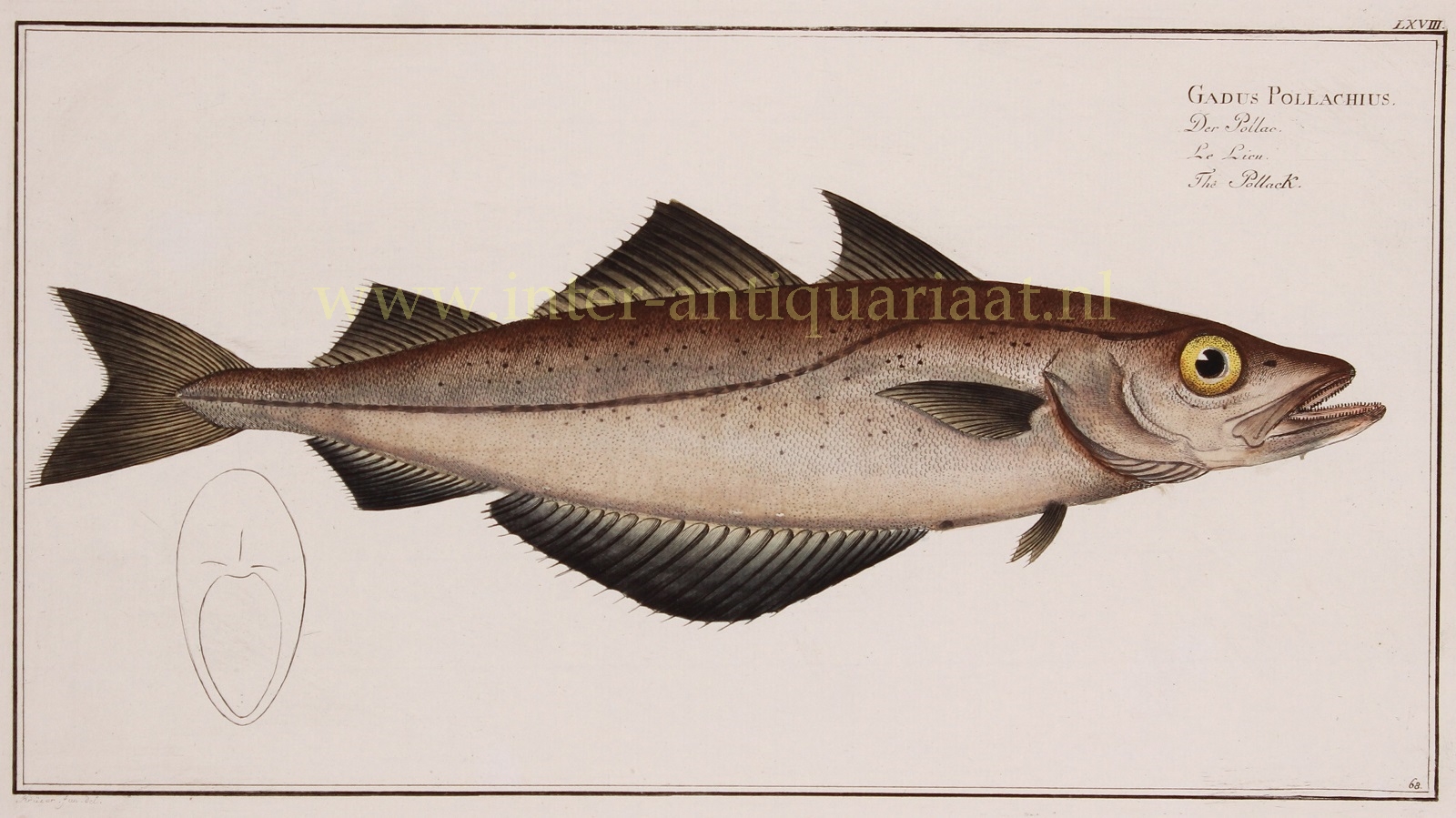THE POLLOCK
“Gadus Pollachius/Der Pollac/The Pollack.” (plate 68), copper engraving made by Ludwig Schmidt after the drawing of Krüger jr, for Markus Elieser Bloch’s “Allgemeine Naturgeschichte der Fische” published in Berlin between 1782 and 1795. With original hand colouring. Size: 19 x 38 cm.
According to Bloch in his Allgemeine Naturgeschichte der Fische, a 12-volume, beautifully illustrated comprehensive work on fishes: the pollock “lives in the Baltic Sea and in the northern ocean, where it can be found in the rocky grounds where the sea has the strongest movement. It appears individually in the Baltic Sea near Lübeck and in the North Sea close to Heiligeland, but only rarely; more often it is in Norway and England, where it arrives in large schools in summer. I also received three of this fish from my scholarly friend in Lübeck.
These fish stick to the surface of the water and often jump out, taking on various shapes and snatching everything that swims on the waves; as you watch them for a while with the goose feathers stuck on your hook. It is usually a foot and a half long and weighs two or three pounds; but there are also some three to four feet long and eight to ten inches wide. It has a white, coarse meat which is better than that of the saithe, but worse than that of cod and whiting. Small fish are its food, especially the sand eel, which is commonly found in its stomach.”
Bloch’s labour on the “Allgemeine Naturgeschichte der Fische” occupied a considerable portion of his life, and is considered to have laid the foundations of the science of ichthyology. The publication was encouraged by a large subscription, and it passed rapidly through five editions in German and in French. Bloch made little or no alteration in the systematic arrangement of Peter Artedi and Carl Linnaeus, although he was disposed to introduce into the classification some modifications depending on the structure of the gills. To the number of genera before established, he found it necessary to add nineteen new ones, and he described 276 species new to science, many of them inhabitants of the remotest parts of the ocean, and by the brilliancy of their colours, or the singularity of their forms, as much objects of popular admiration as of scientific curiosity.
Bloch is considered the most important ichthyologist of the 18th century.
Price: SOLD


